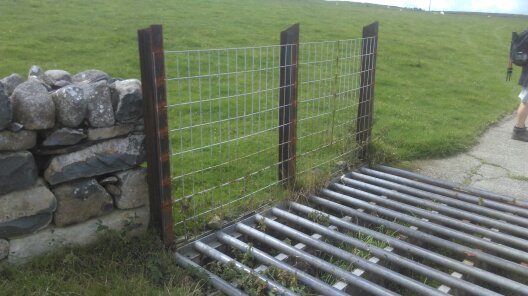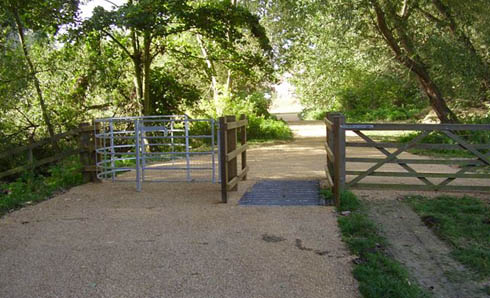
Generally properly designed and constructed Cattle Grids will successfully contain stock. They can rarely get stuck if they try to cross the grid. If the bars are made from materials and in sections permitted by the BS their legs will not be injured. If the pit is the correct depth their chests will not come into contact with the bars.

Smaller wild animals (Mice, hedge hogs and amphibians) are more at risk.
Sad experience has taught lessons which need to be learned.
Firstly the pit needs proper drainage. Without this they may fall into standing water and drown or die of cold. Drains can be a mixed blessing. The pit is lower than the local ground level and if there is no active drainage and the drain is not sealed water can come INTO the pit!
Wild animals need to have provisions made for them if they fall through the bars into the pit. Larger mammals will usually cope with or be deterred by the Cattle Grid.
Secondly they need a ramp to escape from the pit. Thirdly there needs to be a duct or pipe which allows them to get past any sleeper walls to access the ramp.


















